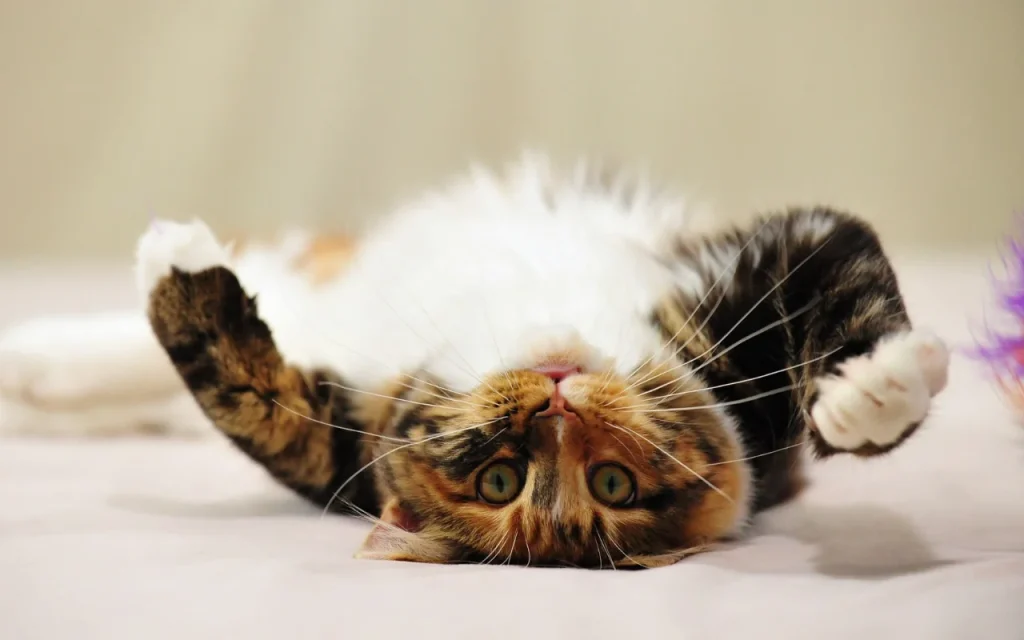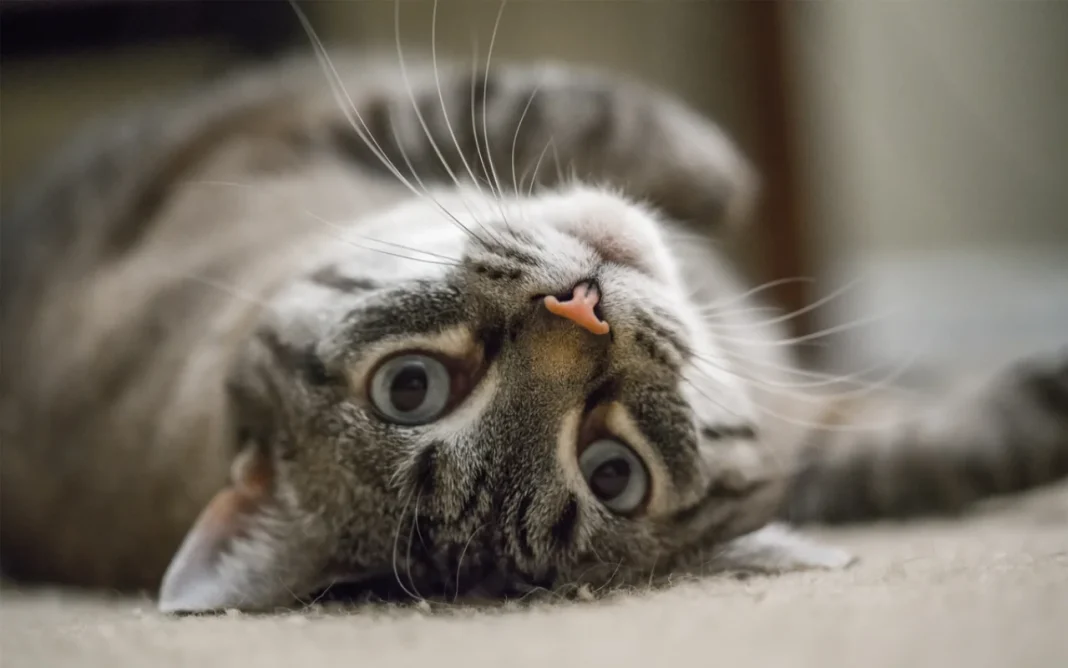Decoding That Adorable Back-Roll: More Than Just a Cute Pose
Beyond trust and comfort, that roll can have a few other meanings, depending on the cat and the situation:
Sometimes that whole roll-over routine is just pure, unadulterated ‘C’mon, let’s play!’ You’ll often see it with a bit of a wiggle, maybe their eyes go all wide and mischievous, and that tail might start twitching with excitement. It’s like they’re shouting, ‘I’ve got the zoomies in my toes, let’s have some fun!’ Little kittens and sprightly young cats? Oh yeah, this is prime playtime language for them.
And let’s not forget, our cats are seriously clever little things, aren’t they? They’re like furry little scientists, always figuring out what makes us humans tick. If they’ve discovered that doing an adorable roly-poly on the floor makes you stop what you’re doing and go ‘Awww!’ or even just glance their way, well, guess what? They’ve just added a very effective ‘get human’s attention right now’ button to their repertoire!
Now, there’s a particular situation where you might see a lot of rolling, and it’s a bit different: if you have a female cat who isn’t spayed and she’s ‘in heat’ (or ‘in season,’ as some folks say – vets call it estrus). She might suddenly be doing a whole lot more rolling on the floor, often with some pretty loud purring or very distinct meows. That’s all part of her natural ‘Yoo-hoo, any interested boy cats out there?’ mating dance. So, if your unspayed girl suddenly turns into a rolling, extra-cuddly, yowling machine, a chat with your vet about getting her spayed is definitely a good plan.
And here’s a slightly surprising one: while it looks like the ultimate surrender, that belly-up position, paradoxically, can also be a defensive posture. Think about it – if a cat is on their back, all four paws, complete with sharp claws, and their teeth are perfectly positioned to fend off an attacker. Now, in a relaxed home environment with a trusted human, this is rarely the primary reason they’re rolling over for you, but that underlying instinct is still there.

The “Look, But Definitely Don’t Touch!” Tummy: Why It’s So Often Off-Limits
So, if they’re showing you their belly as a sign of trust or playfulness, why the sudden transformation into a tiny, furry ninja if you try to go in for a pat?
- Ultimate Vulnerability: As we said, that belly protects all their vital organs. Even if they trust you enough to show it to you, the ingrained, ancient instinct to protect that vulnerable area is incredibly strong. An unexpected hand moving towards it can trigger a defensive reaction, even if they don’t consciously mean to scratch you. It’s just pure reflex for many cats.
- It’s Super Sensitive (and Maybe Ticklish!): The skin and fur on a cat’s belly are often much thinner and more sensitive than on their back or head. Some cats are genuinely very ticklish there, or the sensation of being touched on their belly just feels overwhelming or unpleasant to them.
- A Learned Response: If a cat has had a negative experience in the past with having their tummy touched – maybe someone was a bit too rough, or they were startled – they might learn to preemptively defend that area.
- Here’s a really biggie, probably the main reason for all that ‘show-but-don’t-touch’ confusion: that belly reveal? It’s often a massive, profound statement of trust, like them saying, ‘See? I feel so chilled out and safe with you right here, right now, that I can totally show you my soft, vulnerable undercarriage.’ But, and it’s a crucial ‘but,’ that beautiful display doesn’t always come with a footnote saying, ‘And now, human, you have full permission to dive in for a belly rub.’ For a whole lot of cats, just showing you the belly is the compliment, the ultimate sign of trust. The actual touching part? That can suddenly feel like a boundary crossed, popping that lovely bubble of safety they were just enjoying.
So when can you rub the belly safely? The answer’s not so simple — turn the page to learn how to read your cat’s subtle signals before going in for a tummy touch.











